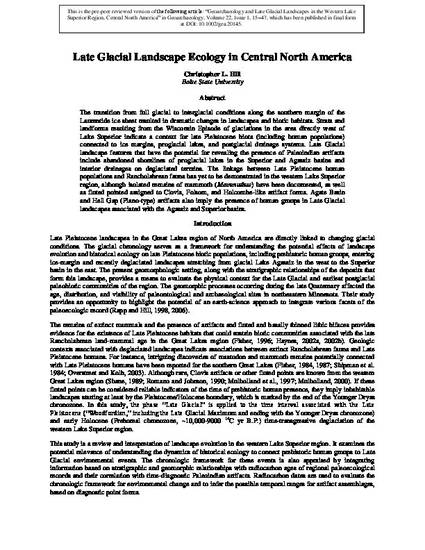
The transition from full glacial to interglacial conditions along the southern margin of the Laurentide ice sheet resulted in dramatic changes in landscapes and biotic habitats. Strata and landforms resulting from the Wisconsin Episode of glaciation in the area directly west of Lake Superior indicate a context for late Pleistocene biota (including human populations) connected to ice margins, proglacial lakes, and postglacial drainage systems. Late Glacial landscape features that have the potential for revealing the presence of Paleoindian artifacts include abandoned shorelines of proglacial lakes in the Superior and Agassiz basins and interior drainages on deglaciated terrains. The linkage between Late Pleistocene human populations and Rancholabrean fauna has yet to be demonstrated in the western Lake Superior region, although isolated remains of mammoth ( Mammuthus) have been documented, as well as fluted points assigned to Clovis, Folsom, and Holcombe-like artifact forms. Agate Basin and Hell Gap (Plano-type) artifacts also imply the presence of human groups in Late Glacial landscapes associated with the Agassiz and Superior basins.
This is the pre-peer reviewed version of the following article: "Geoarchaeology and Late Glacial Landscapes in the Western Lake Superior Region, Central North America" in Geoarchaeology, Volume 22, Issue 1, 15–47, which has been published in final form at DOI: 10.1002/gea.20145.
Available at: http://works.bepress.com/christopher_hill/15/
